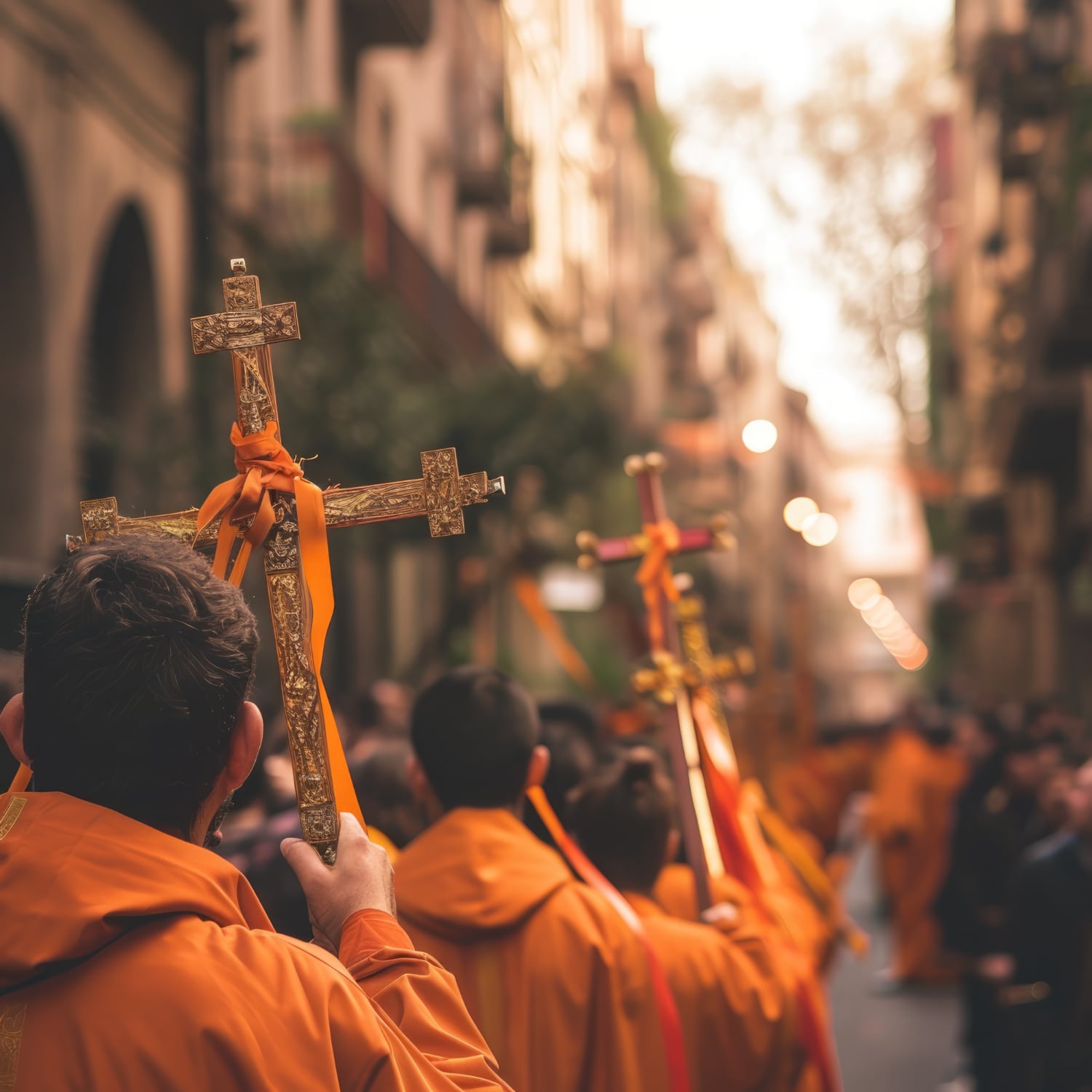Holy Week is one of the world's most deeply rooted traditions. It starts on Palm Sunday and ends on Easter Sunday. Since the 2nd century, it has commemorated the passion, burial, and resurrection of the Son of God.
As a Spanish as a Foreign Language student, you need to know the context of the celebrations in case you are studying at Academia Contacto in the month of April 2025.
Origin of the holy week
As history tells it, in Madrid, the origin of the processions dates back to the 16th century. The nobles toured the Royal Palace with palms and the artisans took their sacred images to the streets.
From Friday of Sorrows to Easter Sunday (April 11 to 20 in 2025) thousands of people will come to the city to attend the different processions that run through the streets of Madrid. The sound of drums and trumpets, along with the brothers' colorful costumes, defines Holy Week in Spain. The Organ Music Series in San Ginés takes place a week before. There’s also a concert by the Municipal Symphonic Band, a saetas program with top singers (Thursday to Holy Saturday), and the classic tumbarra on Easter Sunday. Try the typical dishes of these dates: chickpea stew and delicious torrijas!
While churches and basilicas schedule sacred music concerts, the different brotherhoods take to the streets with the steps they have been preparing throughout the year and the best restaurants and pastry shops in the city add typical Easter dishes with a traditional touch to their menus.
The visual part: impressive processions. During Holy Week, delicate religious images from basilicas and churches are adorned with candles, flowers, and embroidered cloaks. They are then carried through iconic places like Paseo del Prado, Alcalá Street, and Plaza Mayor. Dozens of Nazarenes accompany them, while bearers from different brotherhoods carry the floats. The processions begin on Friday of Sorrows with Cristo del Pozo, Nuestra Señora de los Dolores, Santísimo Cristo del Perdón, and María Santísima de la Misericordia.
As in any religious celebration, Holy Week in Madrid includes traditional dishes. These are linked to religious duties but, above all, to tradition.
Gastronomy
Torrija is a must-try in Madrid during Holy Week. This sweet treat is made with bread soaked in milk and cinnamon, then fried and sprinkled with sugar. Enjoy it with your Intensive Spanish Course classmates!


